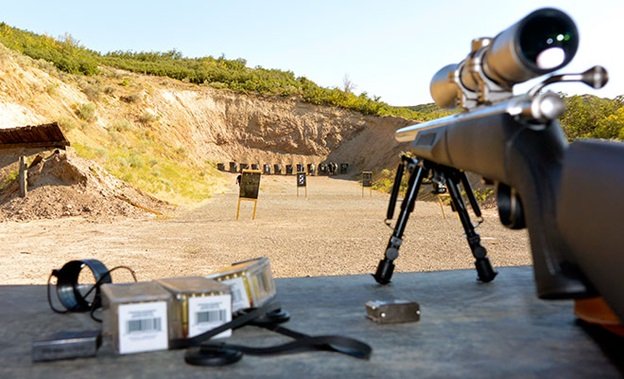Our Location
304 North Cardinal St.
Dorchester Center, MA 02124

For hunters, precision is everything. Whether you’re tracking a trophy buck in dense timber or glassing open terrain for elk, a stable shooting platform can mean the difference between a clean kill and a missed opportunity. Enter the bipod—a simple yet game-changing tool that enhances accuracy, reduces fatigue, and adapts to unpredictable field conditions. In this guide, we’ll explore why a bipod is a must-have for serious hunters and how to maximize its effectiveness in the wild.
A bipod transforms your rifle into a rock-steady platform, eliminating the natural sway caused by muscle fatigue, wind, or uneven terrain. This is especially critical for:
Long-range shots (300+ yards) where minor wobble magnifies downrange.
Precision hunting (e.g., varmint or predator control) requiring sub-MOA accuracy.
Modern bipods offer adjustable legs (typically 6–12 inches or more), allowing you to:
Shoot prone in open fields or low brush.
Kneel or sit in uneven terrain by extending one leg longer than the other.
Deploy quickly with lever or twist-lock mechanisms.
Holding a rifle steady for extended periods drains energy. A bipod lets you:
Conserve strength during long stalks or waits.
Stay focused on tracking and shot placement.
Spot-and-stalk: Quickly deploy when you spot game.
Blind/stand hunting: Perfect for confined spaces.
Mountain hunting: Lightweight carbon fiber models won’t weigh down your pack.
Aluminum: Durable and affordable (e.g., Harris Bipods).
Carbon Fiber: Ultralight for backcountry hunts (e.g., Magpul Bipod).
Steel: Heavy-duty for magnum calibers (e.g., Atlas Bipods).
6–9”: Ideal for prone shooting in open terrain.
9–13”: Versatile for mixed positions.
13”+: Best for sitting/kneeling in thick cover.
Picatinny/Rail Mount: Secure attachment for modern rifles.
Swivel Stud Mount: Compatible with traditional stocks.
Pan/Tilt Function: Adjust aim without repositioning (critical for moving game).
Spiked/Rubber Feet: Spikes grip soft ground; rubber feet stabilize on hard surfaces.
Weight: Backpack hunters should prioritize sub-1 lb models.
Practice Deployment
Train to extend legs smoothly and silently to avoid spooking game.
Use a Rear Bag
Pair your bipod with a rear sandbag for 3-point stability.
Angle Management
On steep slopes, extend the downhill leg longer to level your rifle.
Maintenance
Clean dirt/mud from joints after each hunt and lubricate with silicone spray.
Harris HBRMS 9–13” Swivel – Legendary reliability.
Atlas BT46-LW17 – Best for precision long-range.
Magpul M-LOK Bipod – Ultra-lightweight for backpacking.
A bipod isn’t just an accessory—it’s a force multiplier for hunters. By providing stability in unpredictable conditions, it elevates your accuracy and confidence afield. Whether you’re chasing mule deer in the Rockies or hogs in Texas, investing in a quality bipod will pay dividends in your success rate.
Gear Up: Shop our curated selection of hunting bipods and tag us in your hunt photos!
SEO Keywords: Hunting bipod, best bipod for hunting, rifle stability, long-range hunting gear, field shooting tips.
CTA: Subscribe for more hunting gear guides and exclusive discounts!
